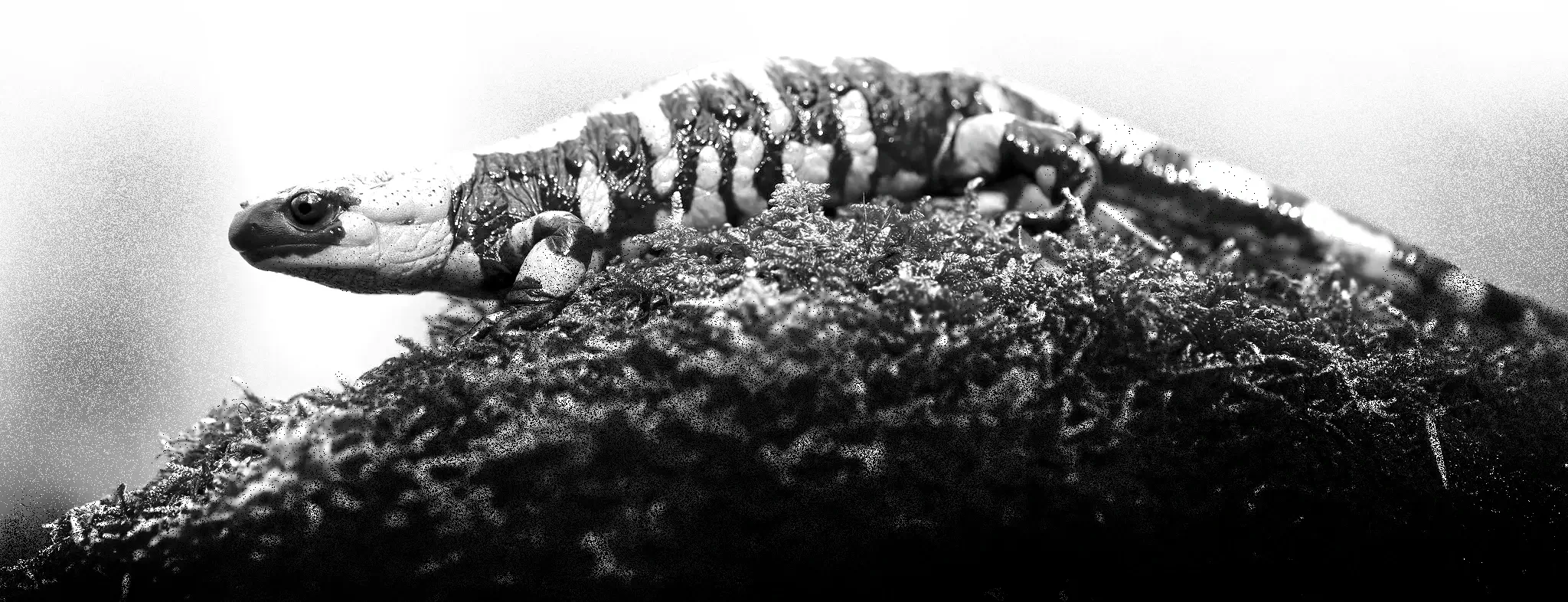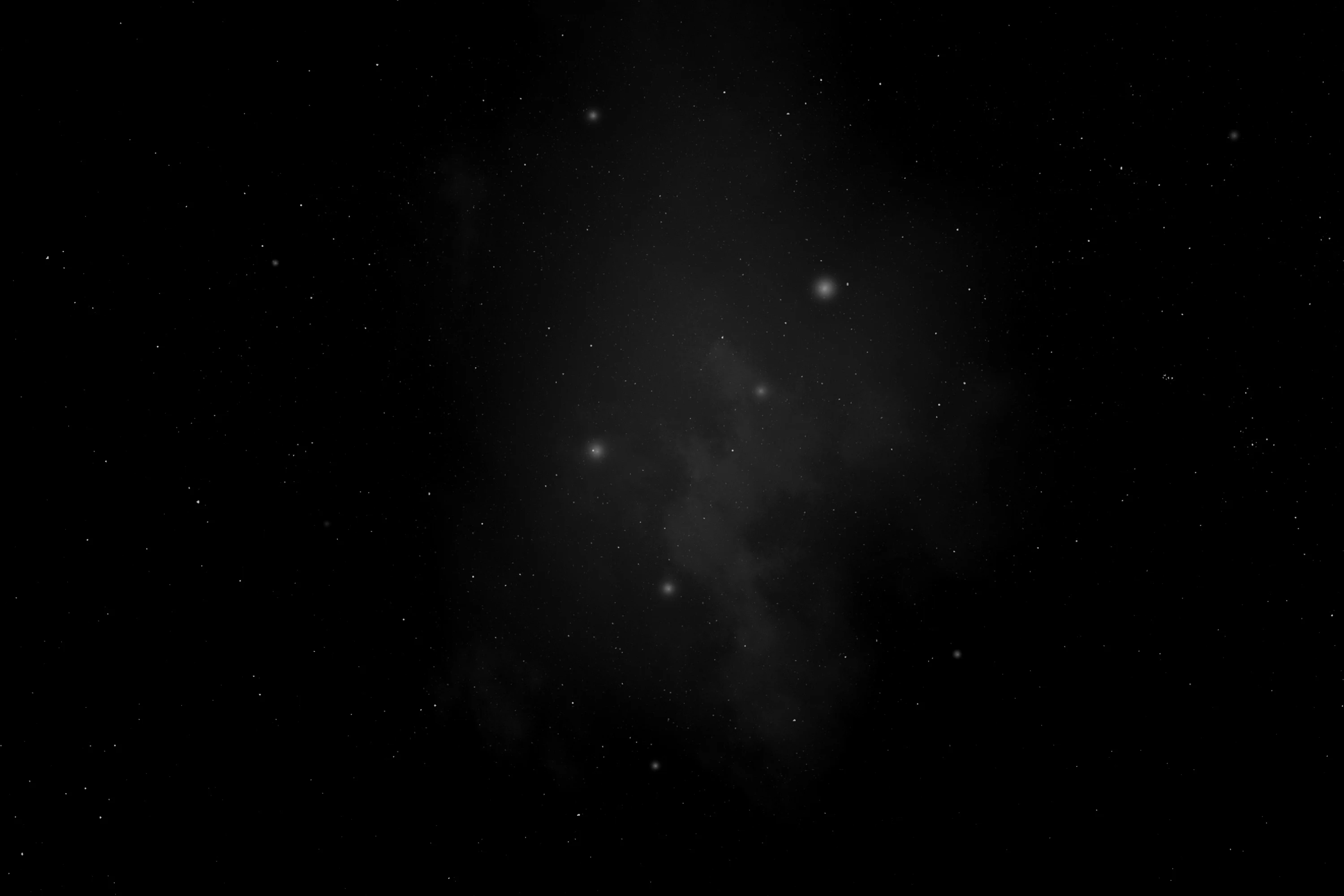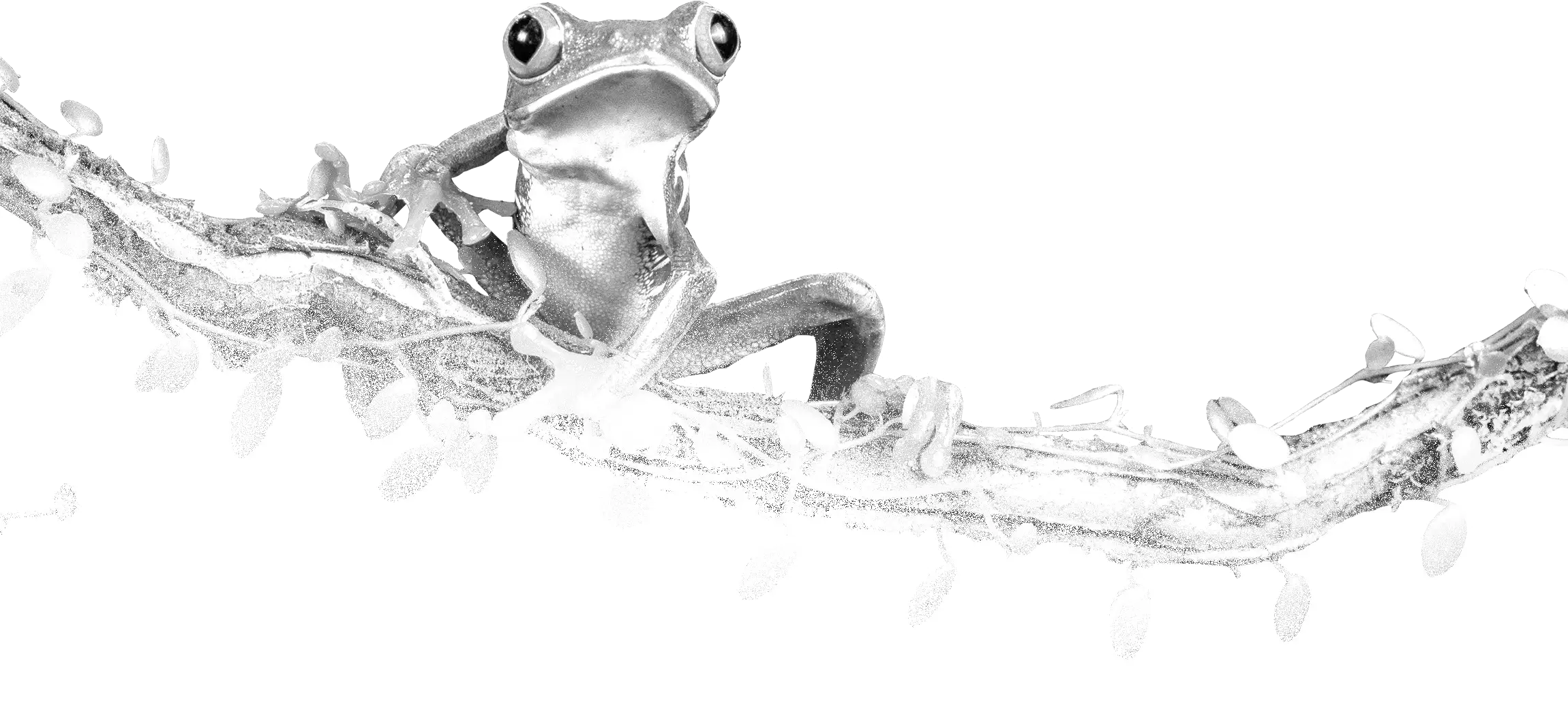
(Typhlonectidae)
Aquatic Caecilians
Водяні черв'яги
Typhlonectidae, also known as aquatic caecilians or rubber eels, are a family of caecilians found east of the Andes in South America.
They are viviparous animals, giving birth to young that possess external gills. Of the five extant genera in the family, Atretochoana, Potamotyphlus and Typhlonectes are entirely aquatic, while Chthonerpeton and Nectocaecilia are semi-aquatic. Atretochoana reaches 100 cm in length, but other species in the family range from 20 to 60 cm. A sixth typhlonectid genus, Ymboirana, was recently described and is known exclusively from fossil material.
Atretochoana
It is the largest tetrapod to lack lungs, double the size of the next largest. Caecilians such as Atretochoana are limbless amphibians with snake-like bodies, marked with rings like those of earthworms. It has significant morphological differences from other caecilians, even the genera most closely related to it, even though those genera are aquatic. The skull is very different from those of other caecilians, giving the animal a broad, flat head. Its nostrils are sealed, and it has an enlarged mouth with a mobile cheek. Its body has a fleshy dorsal fin.
Most caecilians have a well-developed right lung and a vestigial left lung. Some, such as Atretochoana’s relatives, have two well-developed lungs. Atretochoana, however, entirely lacks lungs, and has a number of other features associated with lunglessness, including sealed choanae, and an absence of pulmonary arteries. Its skin is filled with capillaries that penetrate the epidermis, allowing gas exchange. Its skull shows evidence of muscles not found in any other organism.
Most caecilians are burrowers, but some, including Atretochoana’s relatives, are largely aquatic. Atretochoana is thought to be aquatic since its relatives and lungless salamanders, some of the few other lungless tetrapods, are aquatic as well. It was postulated to inhabit fast-flowing water.
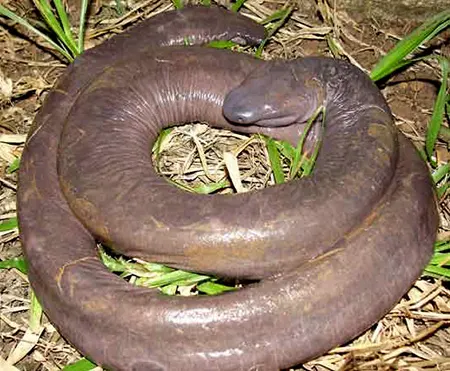
(Atretochoana eiselti)
Penis Snake
Черв'яга Айзельта
It is endemic to Brazil. In the wild, it has been recorded only twice: on Mosqueiro Island on the Atlantic coast and in the Madeira River.
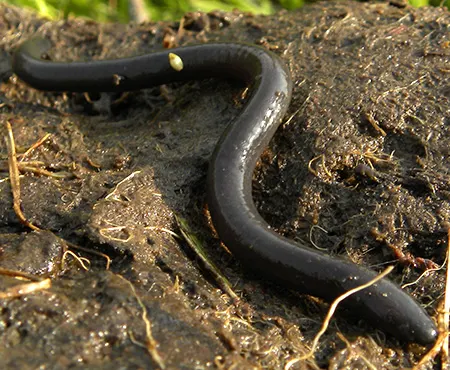
(Chthonerpeton indistinctum)
Argentine Caecilian
Водяна черв’яга аргентинська
It is found in Paraguay, Uruguay, Brazil and Argentina at altitudes ranging up to 1,000 m. It is partially terrestrial and partly aquatic, possibly having annual migrations. When on land, it mostly stays close to the river bank, but occasionally ventures some way from water.
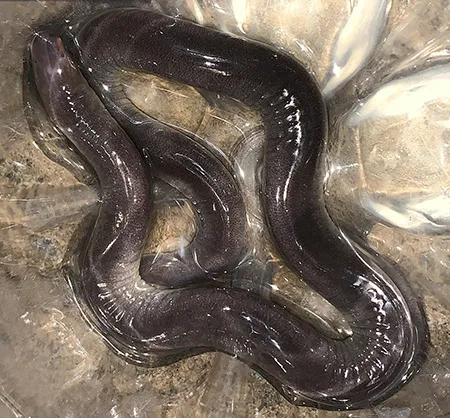
(Chthonerpeton noctinectes)
It is endemic to Brazil. Its natural habitats are subtropical or tropical seasonally wet or flooded lowland grassland, swamps, freshwater lakes, and pastureland.
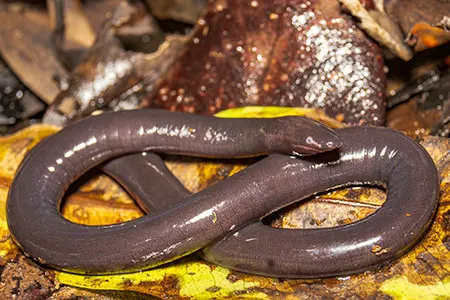
(Chthonerpeton braestrupi)
Braestrup's Caecilian
Водяна Черв'яга Браеструпа
It is endemic to Brazil. Its natural habitats are rivers, swamps, freshwater marshes, intermittent freshwater marshes, pastureland, irrigated land, seasonally flooded agricultural land, canals and ditches.
The genus (Chthonerpeton) also includes: (Chthonerpeton viviparum), (Chthonerpeton tremembe), (Chthonerpeton perissodus), (Chthonerpeton onorei), (Chthonerpeton exile), (Chthonerpeton arii).
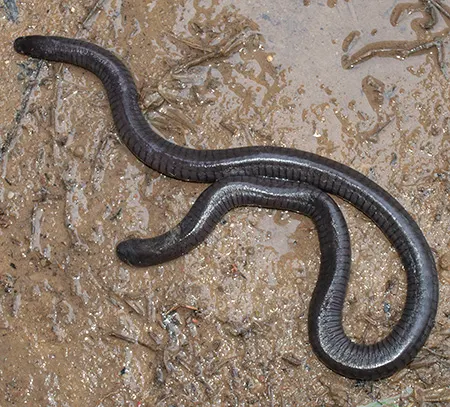
(Nectocaecilia petersii)
Upper Amazon Caecilian
Водяна Черв’яга Петерса
It is found in the southern Amazonas State of Venezuela, the tropical lowlands of north-western Amazonian Brazil, and presumably the tropical lowlands of Amazonian Columbia. Its natural habitats are subtropical or tropical moist lowland forests and rivers, where it tends to live by the banks of streams.
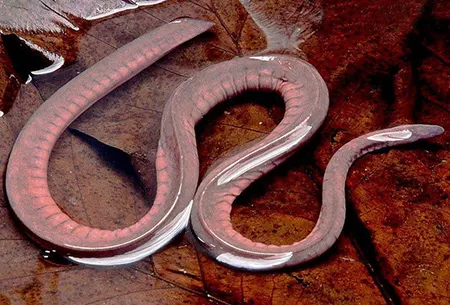
(Potomotyphlus kaupii)
Kaup's Сaecilian
Водяна Черв’яга Амазонська
It is found widely in the Amazon Basin and the Guianas in South America, and is known to occur in Brazil, Colombia, Ecuador, Peru, Venezuela, and possibly Bolivia. Its natural habitats include subtropical and tropical moist forests, wetlands, lowlands, rivers, freshwater lakes, and swamps.
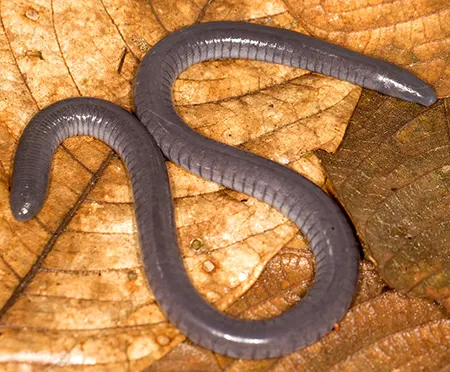
(Typhlonectes compressicauda)
Cayenne Caecilian
Водяна черв'яга пласкохвоста
It is found in Amazonian Brazil, Peru, and Colombia as well as in Guyana and French Guiana, and likely Suriname, and according to some sources, Venezuela. It is an aquatic caecilian that inhabits permanent rivers and marshes mainly in the lowland forest zone.
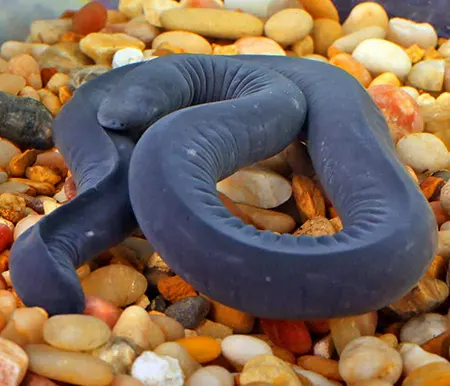
(Typhlonectes natans)
Rubber Eel
Водяна черв'яга широкоголова
It is found in Colombia, Venezuela, and possibly Trinidad and Tobago. Its natural habitats are dry savanna, subtropical or tropical dry shrubland, subtropical or tropical moist shrubland, subtropical or tropical seasonally wet or flooded lowland grassland, and rivers.
